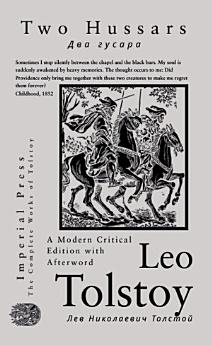Two Hussars
About this ebook
"Two Hussars," known in Russian as "Два гусара," was first published in 1856 in the fifth issue of the journal "Современник" (Sovremennik), dedicated to M. N. Tolstoy, the author's sister. This work was among the first of Tolstoy's writings to be translated into a foreign language, specifically French.
The narrative, set around 1828, introduces Count Fyodor Ivanovich Turbin, a hussar, who encounters his comrade Mikhail Vasilyevich Ilyin. Ilyin, having gambled away 15,000 rubles of state funds to a landowner named Luchnov, faces ruin. Turbin intervenes, forcibly reclaiming the money from Luchnov and returning it to Ilyin. The story also features Turbin's unconventional response to a wealthy widow, Anna Fyodorovna Zaitseva, who insults him by offering financial assistance; he "punishes" her with an ardent kiss and embrace. The central conflict of the novella lies in its exploration of the "fathers and sons" theme, contrasting the moral frameworks of the early and mid-19th centuries.
This critical reader's edition presents a modern translation of the original manuscript, crafted for the modern reader with clean, contemporary language and simplified sentence structures that clarify his complex Russian phrasing and specific antiquated references. Supplementary material enriches the text with autobiographical, historical, and linguistic context, including an afterword by the translator on Tolstoy’s personal history, impact, and intellectual legacy, an index of the philosophical concepts he employs—emphasizing Existentialism and influence by Schopenhauer—a comprehensive chronological list of his published writings, and a detailed timeline of his life, highlighting the personal relationships that shaped his philosophy.
